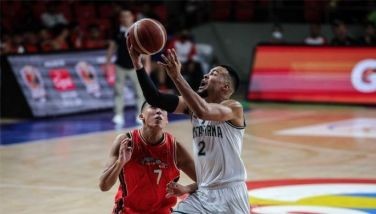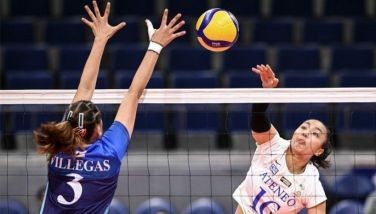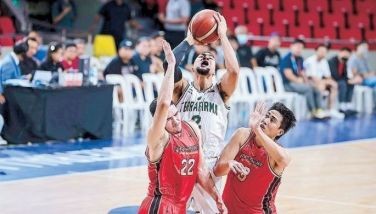Armenia wins vs Rest of World
The most celebrated team match between Armenia and Rest of the World took place June 10-16 in Moscow. The match was organized to honor the 75th birth anniversary of the late Armenian world chess champion Tigran Petrosian.
Former world champion Garry Kasparov, whose mother is Armenian, led the Armenian contingent. The All-Star cast included world title challenger Peter Leko, whose wife is Armenian, many-time world contender Boris Gelfand, who is Petrosian’s favorite pupil, and super GMs Vladimir Akopian, Smbat Lputian and Rafael Vaganian. The Rest of the World had former world champion Viswanathan Anand (India), World’s No. 8 Michael Adams (England), and World No. 6 Peter Svidler, the current Russian champion. Super GMs Loek van Wely (Holland), Etienne Bacrot (France) and Francisco Vallejo Pons (Spain) completed the cast.
The match was played over six rounds, and conducted on the Scheveningen format, i.e., each player on one side plays against every player on the other team. The overall result, with Team Rest of the World prevailing, was 18.5 : 17.5. At a certain stage of the final round match, it was thought Armenia might level the score, as Gelfand held the advantage against Bacrot in a Rook and Bishop vs. Rook ending. But the French champion gamely hang on, finally obtaining a draw in a marathon endgame.
At 73, Victor Korchnoi must be on the decline. The two-time world title challenger is feeling, by his own admission, the ravages of time. His Elo rating has tremendously dropped, and in the latest World Rankings, he was out of the top 100, the first time since almost half a century ago. But in the 2004 Gyorgy Marx Chess Memorial held June 5-15 in Hungary, he paced himself beautifully, topping the Category 14 all-GM event. He had 7.5 out of possible 10, and an impressive 2780 performance rating.
Second was Hungary’s young star Ferenc Berke (6.5), followed by Alexander Beliavsky of Slovenia (6.0), Nevednichy of Romania (4.0) and Magyar stalwarts Lajos Portisch and Peter Acs (3.0).
The 2004 Russian Super Chess League, held recently in the seaport of Sochi, was the strongest in years. There were 10 teams in all, composed mostly of super GMs and aspiring young stars. The big names this year included GMs Alexander Morozevich, Alexander Grischuk, Evgeny Bareev, Victor Bologan, Boris Gelfand, Vladimir Akopian and Vladimir Malachov.
The unpredictable performance of the young crop of Russian players, made a forecast, a not too easy task, but the final result was, as a whole, a vindication of youth. The Morozevich led Toms 400 Yukos, emerged champion, garnering 15.0 total match points, and 35.0 total game points, and beating chief rival Norilsky Nikel in the deciding match. Morozevich, who is ranked seventh in the current world ratings, provided the scoring sock for the champion team, with an impressive 6.5/8, for a very high 2900 performance rating on board 1. Joining Morozevich in the winning team were Akopian (5/7), Khalifman (4.5/7), Jakowenko (4/7), Inarkiev (4/7), Smirnov (4.5/7). Bocharov (3/4) and Belosarov (1/1. The last four were all young GMs in their early twenties.
Now for the best attacking game of the 2004 Russian Super Chess League.
Russian Super League 2004
W) GM A. Morozevich
B) GM V. Bologan
Caro-Kann Defense
1. e4 c6
2. d4 d5
3. f3 ...
Rather unexpected. Morozevich refrains from well-known lines such as 3. Nc3 and 3. e5 in favor of something "unorthodox."
3... e6
The Pawn sacrifice after 3...dxe4 4. fxe4 e5 5. Nf3 (Black’s threat is 5...Qh4ch) 5...exd4 6. Bc4, is assessed by theory as unfavorable for Black.
4. Nc3 Bb4
5. Bf4!? ...
This system of development was seen in the game Nataf-Motylev, Istanbul 2000, in which White achieves a sound position and can quickly get an advantage should Black play inaccurately.
5... Ne7
Black anticipates the Pawn avalanche g4-g5 and h4-h5, so correctly develops the Knight to e7 instead of f6.
6. Qd3 b6
7. Nge2 Ba6
8. Qe3 0-0
9. 0-0-0 c5
10. a3 Bxc3
11. Qxc3 Bxe2
12. Bxe2 c4
After 12...cxd4 13. Qxd4 Nbc6 14. Qf2 enhances the scope of White’s Bishops, so Black decides to lock the center.
13. h4 b5
14. Qe1 Nbc6
15. h5 Qd7
15...dxe4 16. fxe4 Nxe4 17. Kb1 leads to a difficult game for Black owing to the unpleasant pin on the d-file.
16. g4 f6
Preventing White’s 17. h6, and if 17...g6, then 18. e5! with the idea of Qh4-Qf6-Qg7 mate.
17. Bf1!? ...
A cunning move, intending to exploit Black’s weakness on the e6 square, via the maneuver Bh3-g5-exd5.
17... Rad8
The continuation 17...Nxd4 18. Rxd4 e5 19. Rd2 exf4 seems risky on account of 20. h6! g6 (or 20...g5? 21. exd5 Nxd5 22. Qe4 Rad8 23. Bxc4 bxc4 24. Rhd1 f5 25. Qxc4 Qf7 26. Rxd5 fxg4 27. Rxg5ch wins) 21. exd5 Nxd5 22. Qe4 Rad8 23. Bxc4 bxc4 24. Rhd1 f5 25. Qxc4 fxg4 26. Rxd5 Qf7 27. Qc3 Rxd3 28. Rxd5 g3 29. Qd4, white has the upperhand.
18. Bh3 dxe4
19. fxe4 Nxd4
20. g5 ...
Threatening 21. h6 and also activating the h3 Bishop.
20... f5
21. Kb1 ...
Intending 22. c3, without allowing ...Nb3ch.
21... Qc6
22. h6 fxe4?
Here’s the losing move. White gains a decisive tempo in his Kingside attack. Necessary for Black is 22...g6 (not 22...Qxe4? 23. Qxe4 fxe4 24. Rxd4! Rxd4 25. Bxe6ch Rf7 (or 25...Kh8 26. Be5) 26. Rf1 and White gets a winning game) 23. Bg2, Black can still hang on.
23. Qc3! e3
After 23...Qb6 24. Rxd4! Qxd4 25. Bxe6ch, White also wins easily. For instance 25...Rf7 (25...Kh8? 26. Be5!! and mate) 26. Qxd4 Rxd4 27. Rf1 Nf5 28. Be5 Rdd7 29. Rxf5 e3 30 Rxf7 Rxf7 31. g6! hxg6 32. Bxf7ch Kxf7 33. h7 e2 34. Bc3. White likewise wins after 23...Qb6 24. Rxd4 Rxd4 25. Bc7! Nd5 26. Bxb6 Nxc3 27. bxc3, etc.
24. Rxd4! ...
Away with all obstacles. Everything is forced from hereon.
24... Qxh1ch
25. Ka2 Qxh3
26. Rxd8 gxh6
If 26...Nf5 27. Qe5 Qh5 (or 27...Rxd8 28. Qxe6ch Kf8 29. hxg7ch Kxg7 30. Qf6ch Kg8 31. Qxd8ch) 28. Qxe6ch Qf7 29. Qxf7ch Kxf7 30. g6ch!! Kxg6 (30...hxg6 31. Rxf8ch Kxf8 32. h7 wins) 31. Rxf8, White wins.
27. gxh6 Qg4
28. Qh8ch!! 1:0
It is mate in two after 28...Kxh8 29. Rxf8ch, followed by 30. Be5.
1. Ne3! ...
If 1...b1=Q/b1=N, 2. Qxd2/Rc2 mate, or 1...d1=Q/d1=N, 2. Qxb2/Qc2 mate. Or 1...f1=Q/f1=N, 2. Qxd2/Nd1 mate, while 1...Nxd3/N=any , 2. Qxd3/Nd5 mate, and finally 1...Rxh7/Re1, 2. Nd1/h8=Q mates.
- Latest
- Trending































